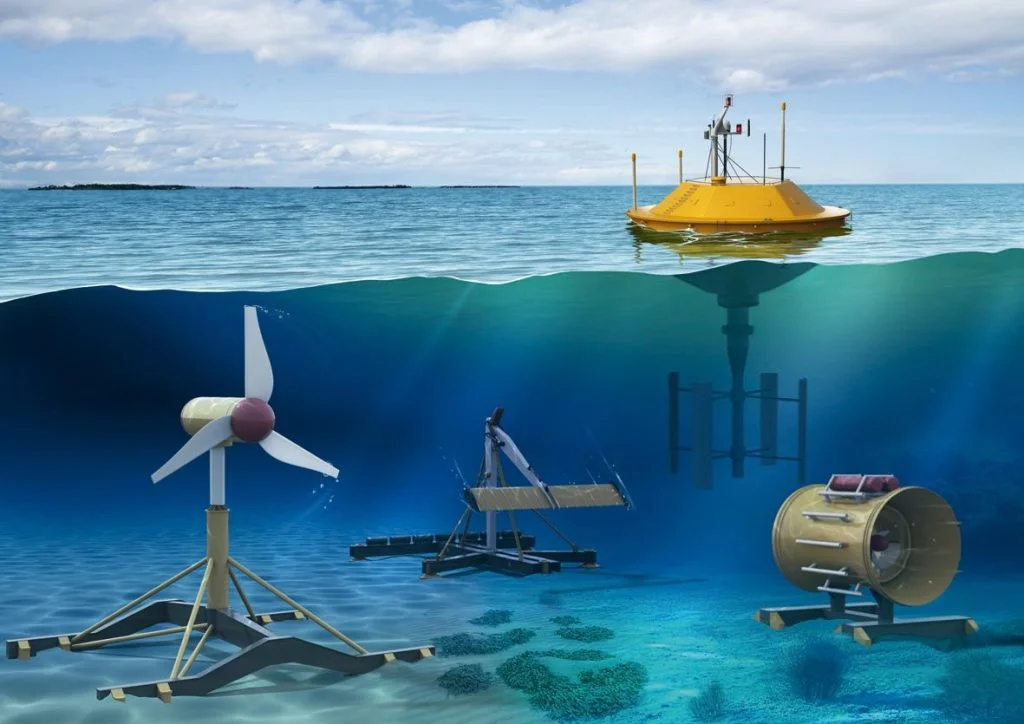
Wave and Tidal Energy: Powering the Future of Renewable Energy
Introduction
Renewable energy sources have become increasingly important in the face of climate change and the need for sustainable power generation. Wave and tidal energy offer promising alternatives to traditional fossil fuel-based energy, with the potential to reduce greenhouse gas emissions and provide clean, reliable power. In this comprehensive article, we will explore the historical background, key concepts, technological advancements, case studies, current trends, challenges, and future outlook of wave and tidal energy.
Historical Background
The utilization of wave energy can be traced back to ancient civilizations, who harnessed the power of waves to perform various mechanical tasks. However, it was during the 20th century that significant developments in wave energy conversion devices took place, laying the foundation for modern wave energy technologies. Tidal energy also has a long history, with civilizations harnessing the power of tides for various purposes. The industrialization era witnessed advancements in tidal energy technology, leading to the emergence of tidal mills and their historical significance.
Key Concepts and Definitions
To have a comprehensive understanding of wave and tidal energy, it is important to define key terms and concepts. Wave energy refers to the capture and conversion of energy from ocean waves into useful forms of power. Tidal energy, on the other hand, involves harnessing the gravitational pull of the moon and sun on the Earth’s tides to generate electricity. These definitions provide a solid foundation for comprehending the subsequent discussions on wave and tidal energy.
Main Discussion Points
Early wave energy technologies and concepts played a crucial role in shaping the present state of wave energy. Wave-powered mills and water pumps were among the earliest forms of wave energy utilization. Additionally, early experiments with wave energy conversion devices paved the way for further advancements. Similarly, the evolution of tidal energy systems can be seen through the historical significance of tidal mills and the impact of modern tidal barrage systems on coastal environments. Technological advancements in wave and tidal energy have led to the development of wave energy converters (WECs) and innovations in tidal stream generators.
Case Studies or Examples
Examining specific case studies provides valuable insights into the practical applications and outcomes of wave and tidal energy projects. One example is the Pelamis Wave Energy Converter, which exemplifies the potential of wave energy. This case study provides a detailed description of the device, its operation, and the results of the Pelamis project. Another case study is the Sihwa Lake Tidal Power Station in South Korea, which showcases the implementation of tidal energy. It outlines the project’s overview, environmental and economic impacts, offering a comprehensive view of tidal energy in action.
Current Trends or Developments
Advances in wave energy technologies are revolutionizing the industry. Floating wave energy converters are gaining popularity due to their ability to harness energy in deeper waters. Wave energy farms, integrating multiple converters, are being developed and integrated into the grid to provide a reliable source of electricity. Tidal energy systems are also witnessing innovations, particularly in turbine designs that enhance power generation efficiency. Additionally, the integration of energy storage solutions ensures a consistent supply of electricity from tidal energy.
Challenges or Controversies
Despite the promising advantages of wave and tidal energy, they are not without challenges and controversies. Environmental impacts, such as potential disruptions to marine ecosystems and effects on coastal erosion and sediment transport, raise concerns about the ecological balance. Economic viability and cost-effectiveness are also significant challenges, as installation and maintenance costs for wave and tidal energy projects are relatively high. The competitiveness of these energy sources with other renewables is a subject of ongoing debate.
Future Outlook
The potential for growth and expansion of wave and tidal energy is promising. Increasing investments and government support indicate a positive outlook for these renewable energy sources. Furthermore, the integration of wave and tidal energy with other renewables in hybrid systems presents opportunities for enhanced efficiency and reliability. Technological advancements in wave energy converters and improvements in tidal energy extraction efficiency are expected to drive the future development of these energy sources.
Conclusion
This comprehensive article has explored the history, key concepts, technological advancements, case studies, current trends, challenges, and future outlook of wave and tidal energy. The significance of these renewable energy sources in the transition to a sustainable future cannot be understated. As society continues to prioritize environmental preservation and combat climate change, wave and tidal energy emerge as crucial players in the global energy landscape.